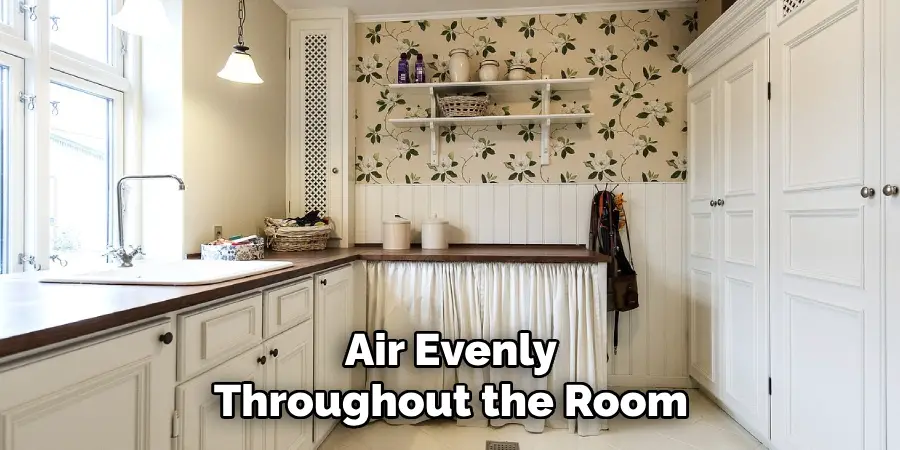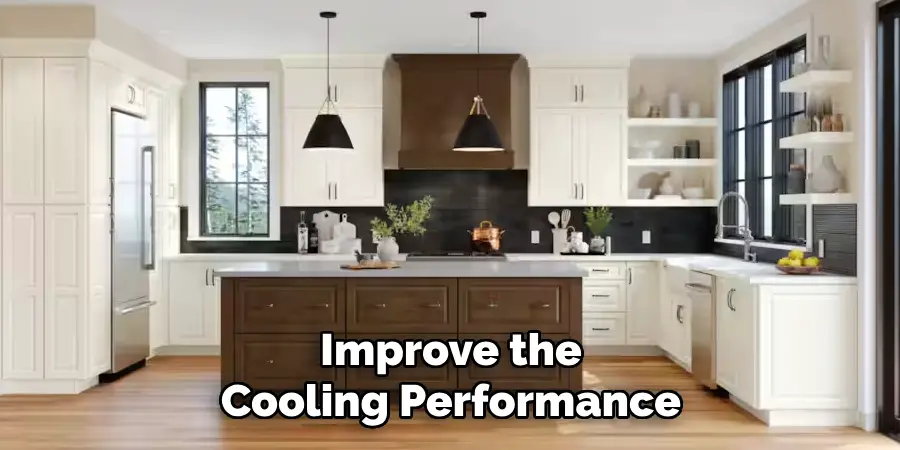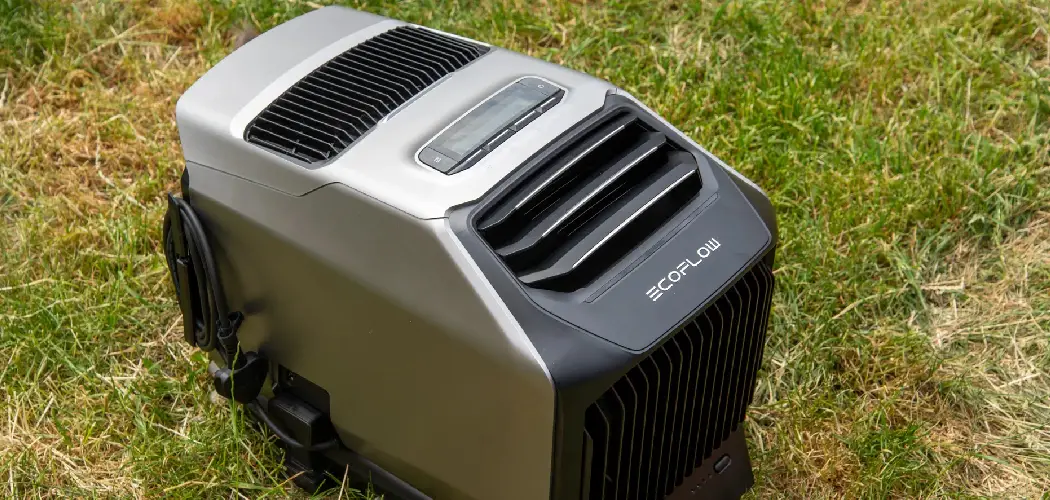Are you looking to make your portable air conditioner colder? Look no further—we have some helpful tips and tricks for you.

When the temperatures rise, ensuring your portable air conditioner performs at its best becomes a priority. Many find that tweaking their units to achieve colder air output is about comfort and energy efficiency. Fortunately, there are several strategies you can employ to enhance the cooling power of your portable air conditioner.
From optimizing its placement to managing airflow and eliminating heat sources, these simple yet effective measures can help you maximize the performance of your device and keep your space refreshingly cool.
In this guide on how to make a portable air conditioner colder, we’ll explore practical tips to help you achieve a brisk and comfortable indoor environment.
What Will You Need?
Before we get started, it’s essential to have a few items on hand to assist you in making your portable air conditioner colder. These include:
- A Thermometer: This will help you monitor and adjust the temperature of your space.
- A Fan: To optimize airflow and distribute cool air evenly throughout the room.
- Insulation Materials: Foam or weatherstripping tape to seal any gaps around the exhaust hose.
- Blackout Curtains: To block out sunlight and prevent heat from entering your room.
Now that you have the necessary items let’s dive into some ways to make your portable air conditioner colder.

10 Easy Steps on How to Make a Portable Air Conditioner Colder
Step 1: Optimize the Placement
The positioning of your portable air conditioner plays a crucial role in its efficiency and effectiveness. Start by placing the unit near a window, as this allows for efficient exhaust venting of the hot air outside, reducing the heat load in your room.
Ensure that the exhaust hose is as straight and short as possible to minimize air resistance and prevent backflow of hot air. Additionally, avoid placing the air conditioner in direct sunlight or near heat-generating appliances, as these can counteract its cooling effect.
By situating your unit in a shaded or cooler part of the room, you further enhance its ability to reduce the temperature. Remember to keep at least 12-20 inches of clearance around the unit for optimal air circulation and to avoid obstructing the air intake and exhaust.
Step 2: Enhance Airflow with a Fan
To further boost the cooling efficiency of your portable air conditioner, consider using a fan in conjunction with the unit. Position a fan strategically to help circulate the cool air more evenly across the room. For instance, placing a fan near the air conditioner’s output can help push the chilled air to areas that may otherwise remain warmer.
This improved air distribution can alleviate the strain on your air conditioner, leading it to operate more efficiently and effectively. Additionally, using a fan can help maintain a consistent temperature throughout the space, eliminating hot spots and ensuring a comfortable environment.
Step 3: Insulate the Exhaust Hose
Proper insulation of the exhaust hose can significantly improve the cooling performance of your portable air conditioner. Since the exhaust hose expels hot air, any heat that radiates from it can increase the room’s temperature and cause the unit to work harder than necessary.

To minimize this effect, wrap the exhaust hose with insulation materials, such as foam or weatherstripping tape. This additional insulation layer reduces heat exchange between the hose and the surrounding air, ensuring that less heat returns to the room.
Moreover, check for any gaps around the window where the hose is vented, and use caulk or weatherstripping to seal them. By efficiently insulating the exhaust hose and eliminating potential leaks, you can help maintain lower temperatures and increase the overall efficiency of your portable air conditioner.
Step 4: Block Out Sunlight with Blackout Curtains
Sunlight streaming into your room can significantly impact the effectiveness of your portable air conditioner, as the sun’s rays can quickly raise the room’s temperature. To combat this, use blackout curtains to cover windows and block out sunlight during the hottest parts of the day.
These curtains are specifically designed to obstruct light and heat, helping maintain a cooler environment indoors. By reducing the amount of external heat entering the room, your air conditioner won’t have to work as hard to keep the space cool, allowing it to operate more efficiently and extend its lifespan. Blackout curtains can also offer the added benefits of enhanced privacy and noise reduction.
Step 5: Maintain the Filter
A clean filter is essential for the optimal performance of your portable air conditioner. Over time, dust and debris can accumulate on the filter, restricting airflow and reducing the unit’s efficiency. This can cause the air conditioner to work harder to cool the room, lowering its cooling effect.
To prevent this, regularly check and clean the air filter according to the manufacturer’s instructions. Typically, this involves removing the filter, rinsing it with water, and drying it thoroughly before reinserting it into the unit. If your air conditioner uses a replaceable filter, ensure you adhere to the recommended replacement schedule, usually every few months.

Step 6: Utilize Ice or Cold Water
Consider incorporating ice or cold water into your cooling strategy to provide an additional cooling boost to your portable air conditioner. Some units come with a compartment designed for ice packs or cold water, which can help enhance the chilling process.
If your model allows for this, simply fill the designated compartment with ice or add cold water to the system. The freezing temperatures from the ice or water can help reduce the air temperature more effectively, making the room feel more relaxed. It’s essential to ensure you follow your model’s specific guidelines to avoid damage.
Step 7: Reduce Humidity Levels
High humidity can make a room feel warmer than it actually is, causing your portable air conditioner to work harder to maintain a comfortable temperature. To combat this, consider using a dehumidifier in conjunction with your air conditioner. A dehumidifier removes excess moisture from the air, making it feel cooler and more comfortable.
This reduction in humidity lowers the thermal load on your air conditioner, allowing it to function more efficiently. For best results, opt for a dehumidifier that can handle the size of your space and place it in a location that allows for optimal airflow. By maintaining lower humidity levels, you can enhance your portable air conditioner’s cooling capabilities and create a more pleasant indoor environment.
Step 8: Schedule Regular Maintenance
Regular maintenance is crucial for ensuring the longevity and efficiency of your portable air conditioner. Routine checks can help you identify potential issues before they escalate into significant problems. This includes inspecting the unit for any visible signs of wear or damage, cleaning the exterior, and ensuring that the exhaust hoses and vents are unobstructed.
Additionally, it’s advisable to have a professional service the air conditioner periodically, especially before the start of the hot season, to check coolant levels, internal components, and overall system performance.
Step 9: Optimize Room Layout
Optimizing your room layout can significantly improve the performance of your portable air conditioner. Arrange furniture to ensure there are no obstacles blocking airflow from the unit. Position the air conditioner so that it has a clear path to circulate cool air throughout the room.
Additionally, avoid placing heat-producing appliances, such as lamps or televisions, near the air conditioner. These devices can add unnecessary heat to the room, causing the air conditioner to work harder. By thoughtfully arranging your space, you can maximize the circulation of cool air and help your portable air conditioner operate more efficiently.
Step 10: Insulate the Room
Insulating the room can significantly enhance the efficiency of your portable air conditioner by reducing the thermal exchange with the outside environment. This involves inspecting walls, doors, and windows for any areas where outside air might seep in.
Adding weatherstripping around doors and windows, using door sweeps, or installing insulating window films can help create a barrier against warm outdoor air. Moreover, make sure any attic access panels or floor gaps are sealed.
Proper insulation not only assists in maintaining a consistent indoor temperature but also reduces the workload on your air conditioner, leading to lower energy consumption and potentially extending the lifespan of your unit.
By following these steps, you can enhance the effectiveness and efficiency of your portable air conditioner, keeping you cool and comfortable during the hottest months of the year.

Conclusion
In summation, ensuring your portable air conditioner operates at its coldest and most efficient involves a combination of straightforward practices and strategic enhancements.
Block out external heat sources with blackout curtains to maintain a cooler indoor environment. Regularly maintain and clean the air filter to facilitate optimal airflow and efficiency. Integrating ice or cold water, if applicable, can provide a refreshing boost to the cooling process.
Decreasing humidity levels complements the air conditioner’s efforts by making the room’s temperature feel lower. Routine maintenance checks and repairs by the user and professionals prevent potential issues and sustain efficient operation over time.
By applying these steps on how to make a portable air conditioner colder, you can enjoy a more comfortable and refreshingly cool space during those sweltering months.

